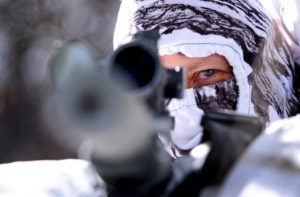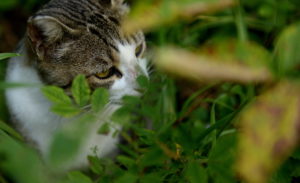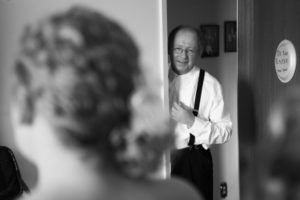iNTRO cOURSE lESSON 10
Focus Point and Recomposition
Which focus point should you use?
The Ah-ha moment.
auto-focus & Re-composition.
Whats wrong with the dynamic autofocus?
Most cameras come from the factory with the focus mode set to dynamic or multi-point auto-focus. In certain instances, such as some sports and wildlife photography, the multi-point focus systems work quite well. The problem is that if you are using the multi-point focus system for most photography it actually has a very negative impact. The fact is, multi-point systems automatically select what the camera believes should be in focus. This, of course is not a great situation if the camera selects something different than what you want. To prevent this, we are going to switch to single point focusing, and in particular the center focus point.
Switching to single point focusing
The first thing we need to do is switch the focusing system from multi-point/Dynamic focusing to the single center focus point.
Every camera has a different method for setting the focus point, but lets go over the basics.
With Canon Rebel cameras, you simply push the button at the top right on the back of the camera and then turn the front dial to move the focus point to different locations. Set it to center focus point and leave it.

With Nikon 3000 and 5000 series cameras, you need to set the focus area to single point as per this image:

With your Nikon pro series camera, Canon Pro cameras and all other cameras, you will need to dive into manual and find out how to: Single Focus Point.
EXERCISE: Set the focus system to single point focusing. Set the the focus point to the center.
NOTE FOR POINT AND SHOOT CAMERAS: With most point and shoot cameras, the focus point shows up as a red square that turns green when the camera has acquired focus.
How does the camera focus?
Now that the focus point has been set to the center, you have the ability to pick exactly what you want in focus.
NIKON NOTE: If you have a Nikon 3000 or 5000 series camera, the focus point is never locked to the center and it may from time to time inadvertently move around the screen. You need to ensure that it is set to the center. If the focus point has moved to a different location, use the arrow pad on the back of the camera to move the point back to the center.
When focusing, only the small center point area is activated for focusing, so you can shoot through a fence or tree branches. The camera will measure a distance from the camera to the subject you are focusing on. As long as you keep your finger depressed on the shutter release, the camera will hold focus at that distance.
EXERCISE: Line up 3 objects on your kitchen table, at different distance from the camera. Using just the center focus point, aim the centre focus point at the far item and focus. In the past, when the multi-point focus system was enabled, the camera would select the close subject like the first object to be the focus. Now you can shoot past the first object to the second or third.
NOTE: The camera needs to have something to focus on. The camera is specifically looking for areas of high contrast. Vertical lines are best but any contrast point will work. For example, if you point the camera at a clear blue sky or a solid colour wall, the camera will not shoot. The camera needs to acquire focus before it can shoot.
Recomposing using the center focus point.
Now we come to the best part of the course. Re-composition is the skill required to create composition in your images. Re-composition allows you to quickly adjust the focus of an image and allows you to showcase your vision.
So lets start recomposing. In the last section we learned about being able to hold focus. Using the center focus point, you selected the subject that you wanted to be in focus. You used the cameras focusing system to measure a distance to your subject. When the camera has acquired focus, you will keep your finger pressed halfway down and this will hold the focus at that distance.
Now, move the camera slightly so that the item that you have focused on is in a different location on the screen other than the center of the frame. Why? In the composition course Rule of Thirds, you will see that rarely do we want the subject smack dab in the middle of the frame. And, as we have learned, the center focus point is intuitive and works fast and is very accurate. So…you need to use the center focus point but you don’t want the focused subject in the middle of the frame. That is the reason for learning re-composition.

THIS IS A KEY SKILL
EXERCISE: Now that you are able to focus, hold the focus and recompose to create composition, lets practice the skill. And this is a skill. This is a learned behaviour and its difficult. It takes practice. You do not need to do this for every shot however, I recommend you try.
Keep your finger pressed halfway to hold the focus and then visually move the camera slightly so that the focused object is in a position other than the middle of the frame.
Take a hundred shots, of a variety of items around your home. Try focusing and recomposing to shoot through table legs, fence posts, branches or anything else. Practice Practice Practice.






